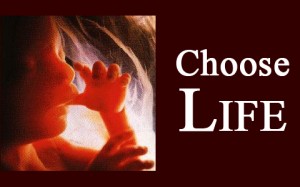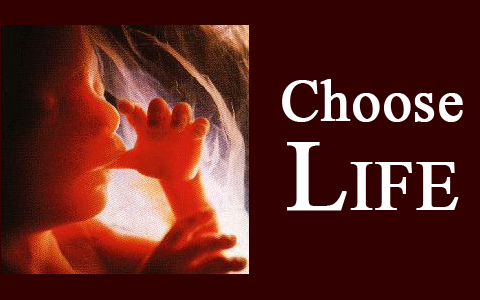 In the fight against the culture of death, are our words enough? Is a political movement of people enough? Is protest enough?
In the fight against the culture of death, are our words enough? Is a political movement of people enough? Is protest enough?
These are questions that need to be asked, especially in the wake of this year’s March for Life in Washington, DC. This article will hopefully articulate my response to these questions based upon the experiences I’ve had with the pro-life cause.
What is the Culture of Death?
Inside Catholic circles, Blessed John Paul II popularized the term “culture of death.” His description appears in article 12 of Evangelium Vitae:
“In fact, while the climate of widespread moral uncertainty can in some way be explained by the multiplicity and gravity of today’s social problems, and these can sometimes mitigate the subjective responsibility of individuals, it is no less true that we are confronted by an even larger reality, which can be described as a veritable structure of sin. This reality is characterized by the emergence of a culture which denies solidarity and in many cases takes the form of a veritable “culture of death”. This culture is actively fostered by powerful cultural, economic and political currents which encourage an idea of society excessively concerned with efficiency. Looking at the situation from this point of view, it is possible to speak in a certain sense of a war of the powerful against the weak: a life which would require greater acceptance, love and care is considered useless, or held to be an intolerable burden, and is therefore rejected in one way or another.”
Blessed John Paul II notes that the structure of man’s sin is characterized or manifest on a universal scale in the culture. In our case, the culture denies solidarity (i.e. unity of persons) therefore emphasizing production and efficiency over persons and personhood. It is not surprising that in this sort of culture, the powerful are easily able to manhandle the weak (e.g. abortion and euthanasia).
We could launch into a discussion of the philosophical underpinnings of the culture of death (e.g. utilitarianism or Nietzschean philosophy), instead, we will instead look at the very core of the culture of death – the sin of man. Blessed John Paul II notes that reality of the culture of death has its seed in the “veritable structure of sin.” The structure of sin has as its true identity “the rejection of God and opposition to him,” and “an abuse of the freedom that God gives to created persons so that they are capable of loving him and loving one another” (CCC 386-387). In short, sin de-constructs, diminishes, or blurs the relationship between Creator and created. From this seminal problem, culture enters the picture. Gaudium et Spes notes that “Indeed, as a weak and sinful being, he often does what he would not, and fails to do what he would. Hence he suffers from internal divisions, and from these flow so many and such great discords in society” (GS 10). The heart of the matter, then, is sin. At the heart of the culture of death is the sin of the individual, who along with other individuals, establish and prolong society, and society, in turn, lends to the demise of the individual.
To be sure, this culture is nothing new – a post-Enlightenment problem. Salvation history, as recorded for us in the inspired words of Scripture, speaks about this culture nearly from the outset – with the fall of Adam and Eve. Here, our first parents chose the serpent’s promise for base worldly knowledge instead of continuing to receive God’s full gift of life and love. Adam and Eve chose death over life, and the consequences are immanent – Cain kills Abel, widespread immorality and wickedness ensues, etc.
The culture of death has been growing in parallel fashion with the culture of life from the point of the first sin until now (see Gen. 3:15).
Against this culture of death, are human words enough?
Now we return to our original question – are human words, human policies, and politics capable of dismantling the culture of death?
While politics are a norm within the human social fabric, one can be certain that with regard to an issue like abortion – an issue that has been around from the time of the ancients until now, when in the last 40 years, over 50 million lives have been lost – politics will not solve the problem. How do we know this?
For one, Jesus would’ve come as a politician. Second, we have already seen how at its core, the culture of death is not the result of philosophy or decrepit ethics or political theory. The culture of death is a result of sin committed freely by persons. Thus it is fundamentally a personal problem, not a political one.
So, what do we do about it?
One can respond to the culture of death in two ways:
First, from within the culture itself. This is actually quite easy, because at the core of the culture of death is sin, and we happen to be quite inclined to sin – “the spirit is willing, but the flesh is weak” (Mt. 26:41). Thus, in a very real way, each one of our sins is building up the culture of death (see also CCC on “concupiscence”).
Thus in fighting the culture of death with purely human means, we are essentially fighting fire with fire.
This point was driven home in at the March for Life in DC last year. Our Youth Ministry program was meeting with a member of Congress who would not even say the President’s name when referring to him. The whole time this member of Congress spoke, it was as if President Obama was not even a person. But, we do this sort of thing all of the time: defamation, bullying, gossip, hatred, etc.
Fighting the culture of death from within the culture of death is bound to fail.
Perhaps politics could solve all human problems in a state like we were supposed to exist in – with original justice and innocence intact. But, we do not live in a state of perfection, and as such, all purely human, and thus tainted by sin, pelagian attempts at “defeating” the culture of death fall short.
Second, by turning to something or Someone extraneous – something or Someone outside of the culture of death.
Here, we have the Christian proposal. That sinful man who had produced through his free action a sinful and wicked state, found himself incapable of restoring order and peace. Thus, he freely turns and opens himself to the possibility of a Divine Revelation, a Savior and Redeemer.
An act of surrender and communion with the Person of Christ, who shares in the mission of the Holy Spirit, so as to draw us back into life with the Father, is the only way to overcome the culture of death. The Son is outside of our human culture. Yet, he entered into it, assuming our nature, that he might meet man where sinful man is, and invite that man into relationship with Him. Through this relationship comes conversion, and with conversion comes sanctity, and with sanctity comes the transformation of culture.
This is what the remnant of the Church has to offer society: hearts that have been conquered by Christ’s victory and hearts that now participate in his victory over sin and death. The battle will not be won with function or politics, because the battle is not against human beings or arid philosophies, but is a battle against sin – “For our struggle is not with flesh and blood but with the principalities, with the powers, with the world rulers of this present darkness, with the evil spirits in the heavens” (Eph. 6:12).
Here, Cardinal Ratzinger’s and John Paul II’s quotes make complete sense:
“And the Church, I shall never tire of repeating it, needs saints more than functionaries.”
“The Church of today does not need any new reformers. The Church needs new saints.”The Final Verdict
Of the two options, the first falls short every time. Vis-à-vis with the culture of death, one must first recognize God’s saving action and saving mission, and then participate in it. This has always been, and will always be the Church’s role. We love because He loved us first (1 Jn. 4:19), and we spread that love through our testimony to the nations (Acts 1:8)
As Pope Benedict recently stated:
“Only God’s precedence makes our journey possible, our cooperation, which is always cooperation, and not entirely our own decision. Therefore, it is important always to know that the first word, the true initiative, the true activity comes from God and only by inserting ourselves into the divine initiative, only by begging for this divine initiative, shall we too be able to become — with him and in him — evangelizers. God is always the beginning, and it is always only he who can make Pentecost, who can create the Church, who can show the reality of his being with us. On the other hand, however, this God, who is always the beginning, also wants to involve our activity, so that the activities are theandric, so to speak, made by God, but with our involvement and implying our being, all our activity.
“So when we are carrying out the new evangelization it is always cooperation with God, it is in togetherness with God, it is based on prayer and on his real Presence” (Pope Benedict XVI – Synod of Bishops – Oct. 8, 2012).
And the purpose of evangelization is always to introduce man to the Person of Christ, and the Person of Christ to man, that man might enter into His mystical body – the Church. Thus, through grace attained by turning to Him, the culture of death can indeed be transformed, simply because the Gospel still has the power to transform the hearts of men:
“God knows us, God loves us, he has entered into history. Jesus is his Word, God with us, God showing us that he loves us, that he suffers with us until death and rises again. This is the Gospel. God has spoken, he is no longer the great unknown, but has shown himself and this is salvation” (Pope Benedict XVI – Synod of Bishops – Oct. 8, 2012).
Please help us in our mission to assist readers to integrate their Catholic faith, family and work. Tell your family and friends about this article using both the Share and Recommend buttons below and via email. We value your comments and encourage you to leave your thoughts below. Thank you! – The Editors













